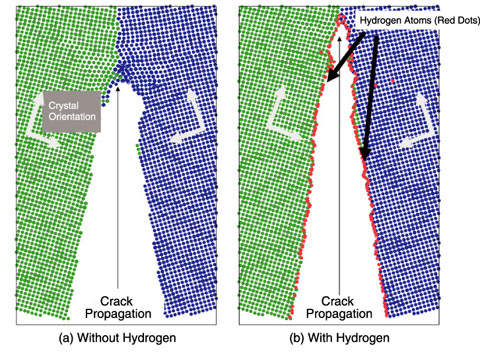
Fig.10-4 Simulation for determining the effect of hydrogen atoms on crack propagation in iron
In metallic materials such as steel, there exist many local disorders in the atomic configuration; the disorders are referred to as lattice defects, and their number and mobility determine the strength of the material. When hydrogen atoms permeate into the material from the external environment, they interact with the lattice defects and greatly degrade the material strength. Several hypothetical mechanisms, such as weakening of the grain boundaries owing to hydrogen segregation and enhancement of growth of small bubble-like lattice defects (referred to as voids), have been proposed to account for the strength degradation. However, the dominant mechanism remains an open question. To develop reactor materials that are resistant to degradation, it is important to identify the dominant mechanism of degradation and find a way to prevent it.
To solve this problem, we have developed a molecular dynamics model (atomistic model) that is capable of reproducing the atomistic behavior of hydrogen and iron atoms. Several molecular dynamics models for hydrogen and iron have been developed in the past, but they can reproduce only the interactions between hydrogen and some types of lattice defects. On the other hand, we have carried out electronic structure calculations of several dozen cases of lattice defects and hydrogen atom placement to investigate the interaction between hydrogen and lattice defects in detail. We have developed a model based on the obtained results, which involve a much larger amount of data compared to that in the previous studies. This model facilitates more general calculations of the interaction between hydrogen and lattice defects, and we can now determine which lattice defect plays a more important role in the process of cracking of iron material containing hydrogen atoms.
Fig.10-4 shows simulation results for crack propagation along a grain boundary of iron (a) without hydrogen and (b) with hydrogen atoms segregated on the grain boundary. We have found that compared to the case without hydrogen, hydrogen reduces the strength of the grain boundary by 30% and the crack propagates farther in a given duration when hydrogen atoms are on the grain boundary. It is expected that if we could develop a material in which the accumulation of hydrogen atoms in the lattice defects causing the degradation is prevented, the material strength would increase by a factor of two. We shall continue quantitative investigations into the effect of hydrogen on crack propagation by considering the interaction of hydrogen with other types of lattice defect mechanisms such as void growth to identify the dominant mechanism of hydrogen degradation in steel.